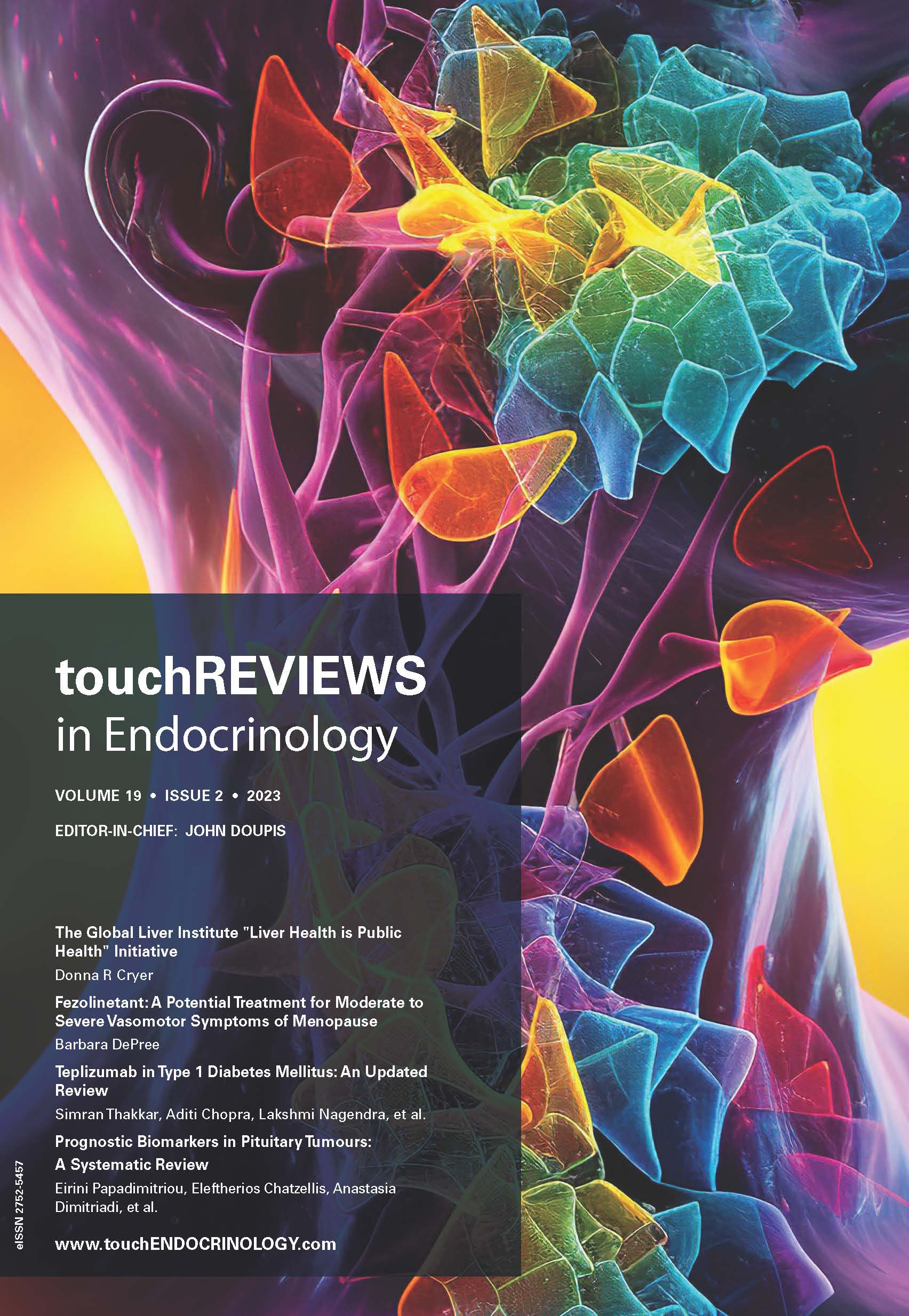touchREVIEWS in Endocrinology Volume 17, Issue 2, 2021
Welcome to the second 2021 edition of touchREVIEWS in Endocrinology (formerly European Endocrinology).
Our Editor-in-Chief, John Doupis, introduces the issue and the range of free-to-access reviews available in this issue. We trust that you will enjoy this new range of free-to-access articles across clinically relevant topics in endocrinology, including diabetes, general endocrinology, liver disorders, pituitary disorders and reproductive endocrinology.
We want to take this opportunity to extend our thanks to all authors who contributed to this issue, and all editorial board members who provide their ongoing support. We are now welcoming submissions to our 2022 editions. If you’re interested in submitting an article, please don’t hesitate to contact us directly. We hope you enjoy this issue!
Foreword
Welcome to this issue of touchREVIEWS in Endocrinology, our bi-annual journal that aims to provide a wide range of articles addressing the most important developments in endocrinology. The increasing prevalence of type 2 diabetes (T2D) worldwide remains the focus of several articles. Complications include diabetic kidney disease, which is a major cause of chronic kidney disease […]
Reviews
Chronic kidney disease (CKD) represents one of the greatest future public health challenges due, among other consequences, to its elevated burden on economic and human resources within healthcare systems.1 Moreover, the rapid growth of type 2 diabetes mellitus (T2DM) results in a high incidence of diabetic kidney disease (DKD), which, together with hypertension, is the main […]
Imeglimin is a novel molecule currently under development for the treatment of type 2 diabetes mellitus, and is the first agent of the ‘glimin’ class of glucose-lowering medication. Optimal glucose control in type 2 diabetes is a prerequisite for correcting defects in both insulin secretion and insulin sensitivity.1 Imeglimin presents a unique mechanism of action that […]
Diabetes mellitus (DM) is a chronic metabolic disorder characterized by hyperglycaemia resulting from insulin resistance, inefficient insulin secretion and disproportionate glucagon secretion.1 It has been reported to be an expanding global health issue of the 21st century, and one of the leading causes of morbidity and mortality in Western countries.2,3 Interestingly, an increasing number of publications […]
Gestational diabetes mellitus (GDM), defined as hyperglycaemia identified after the first trimester of pregnancy that is not clearly overt diabetes, impacts approximately 7% of births in the USA; a percentage that has increased in parallel with the prevalence of both obesity and type 2 diabetes over the past 20 years.1–4 The impacts of GDM include hypertensive […]
Long-chain fatty-acid oxidation disorders (LC-FAODs) are pan-ethnic, autosomal recessive, inherited metabolic conditions causing disruption in the processing or transportation of fats into the mitochondria to perform beta oxidation.1 In normal metabolism, long-chain fatty acids are bound to carnitine within the cytosol of cells, and transported across the mitochondrial membranes. Within the mitochondria, they are then cleaved […]
Non-alcoholic fatty liver disease (NAFLD) consists of non-alcoholic fatty liver (NAFL) and non-alcoholic steatohepatitis (NASH). It is unclear which specific patients progress from NAFL to NASH and, ultimately, to cirrhosis. However, there is general consensus that, for those patients who do progress to cirrhosis (fibrosis stage 4), there is an increased risk of liver-related complications […]
Craniopharyngiomas (CPs) are rare, benign, epithelial tumours of the sellar and parasellar regions arising as embryonic malformations along the pathway of the craniopharyngeal duct.1 They have an incidence of 0.13 per 100,000 per year to 0.5–2.0 per million per year and are classified as grade I tumours according to the 2017 WHO Classification of Tumors of […]
Nearly 75% of all menopausal women experience bothersome vasomotor symptoms, including hot flushes and night sweats.1 Declining levels of estrogen during menopause lead to a narrowing of the central thermal regulatory neutral tone. Minute changes in core body temperature, as little as 0.8 ± 0.99°C, can often trigger sweating and flushing in both perimenopausal and postmenopausal […]
Case Report
Congenital adrenal hyperplasia is an innate error in the biosynthesis of adrenal steroids, which triggers a wide range of consequences based on the level of the enzyme blockade. A deficiency in the enzyme 21-α-hydroxylase is the most frequent cause, presenting with different degrees of virilization in women, and may or may not present with the […]

Trending Topic
We are pleased to present the latest issue of touchREVIEWS in Endocrinology, which offers a timely and thoughtprovoking collection of articles that reflect both the continuity and evolution of diabetes and metabolic disease research. In an era where technology, public health priorities and clinical paradigms are shifting rapidly, this issue highlights the importance of evidence-based […]
Journal Archive
touchREVIEWS in Endocrinology (previously European Endocrinology) is a peer-reviewed, free-to-access, bi-annual journal comprising review articles, case reports, editorials, special reports and original research. It features balanced and comprehensive articles written by leading authorities, addressing the most important and salient developments in the field of endocrinology.
Latest articles videos and clinical updates - straight to your inbox
Log into your Touch Account
Earn and track your CME credits on the go, save articles for later, and follow the latest congress coverage.
Register now for FREE Access
Register for free to hear about the latest expert-led education, peer-reviewed articles, conference highlights, and innovative CME activities.
Sign up with an Email
Or use a Social Account.
This Functionality is for
Members Only
Explore the latest in medical education and stay current in your field. Create a free account to track your learning.
















